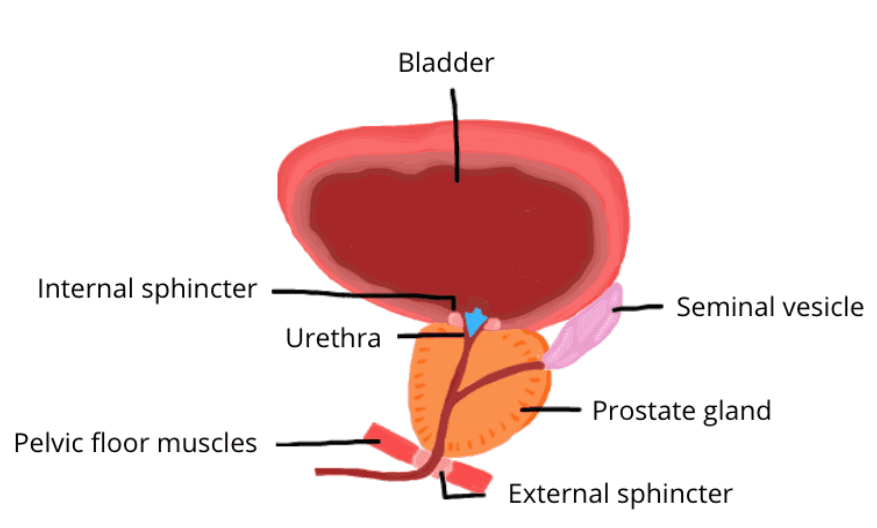Prostatectomy Recovery: can pelvic floor physio improve my post-operative outcomes?
Creating a plan for pre-operative preparation and Prostatectomy Recovery can help improve your outcomes for surgery. Prostate cancer is the 2nd most common cancer affecting males in Canada. 1 in 9 men will be diagnosed with prostate cancer in their lifetime. In many cases, the treatment of choice is a prostatectomy, which is a removal of the prostate gland. Radical prostatectomy is the removal of the entire prostate gland and neighbouring tissues. There are different surgical procedures to remove the prostate gland, but regardless of which is performed, they all share similar side effects.

1 in 9 men will be diagnosed with prostate cancer in their lifetime
Can Pelvic Floor Physio improve recovery?
You might have heard about pelvic floor physio before. Did you know that pelvic floor physiotherapy is for men? It’s especially important when it comes major surgery like radical prostatectomy.
Studies have shown that when you engage in pelvic floor physio, you increase the probability of having a quick recovery from conditions such as incontinence. This can be especially true with the integration of tools like biofeedback during muscle training.
A pelvic floor muscle exercise program commenced prior to prostate surgery enhanced post-surgical measures of pelvic floor muscle function
Pre-Operative: Preparing for your Prostatectomy
Should men see a pelvic physiotherapist before surgery? Definitely! Pelvic physiotherapy both before and after surgery can hugely influence one’s post-prostatectomy recovery.
Most men are concerned about urinary leakage and using diapers following a prostatectomy. Urinary leakage is a common complication of prostatectomy, and it can turn a man’s life upside down. During a radical prostatectomy, the internal urethral sphincter is removed with the prostate gland. The internal urethral sphincter plays an important role in maintaining urinary control. Once it is removed, the body must learn to use and rely on the remaining external sphincter (the assistant to the main sphincter), as well as the rest of the pelvic floor muscles to prevent urinary leakage. Physiotherapy prior to surgery will focus on strength, endurance and coordination of the pelvic floor muscles to help with the demands placed on the muscles.

Radical Prostatectomy: How your body is impacted
Prostate Gland & Internal sphincter are removed. Your body will need to learn how to rely on the external sphincter along with the rest of the pelvic floor to prevent urinary leakage.
Pelvic Floor Physio Treatment may include:
Recovering from your Prostatectomy
Pelvic floor physiotherapy after surgery can help to increase strength, tone and function of your pelvic floor muscles to eliminate any side-effects you may be experiencing.
Common post-surgical symptoms may include:
Post-Operative: 2 weeks
We recommend booking a virtual appointment 2 weeks post-prostatectomy to discuss the outcomes of surgery and start early treatment.
Treatment may include:
Post-Operative: 6 weeks
We recommend that patients begin in-person therapy during this time. Most men are able to return to normal activities approximately 6 to 8 weeks after surgery. At this point, an in-person assessment will take place followed by treatment such as:
Whether you are pre-operative, early post-operative, or many years post-operation, you will benefit from a Pelvic Floor Assessment. A pelvic floor physiotherapist can address the treatment areas above and get you back to doing the things you love.



